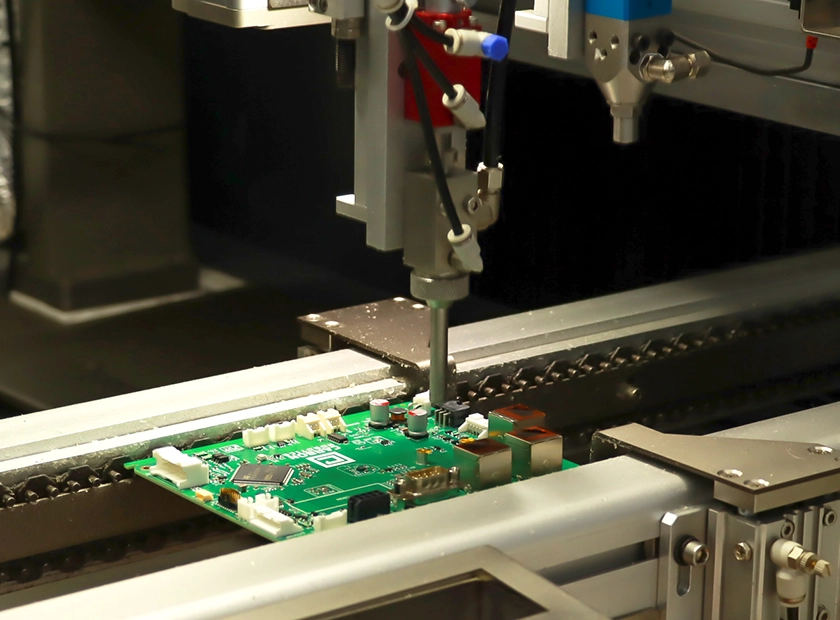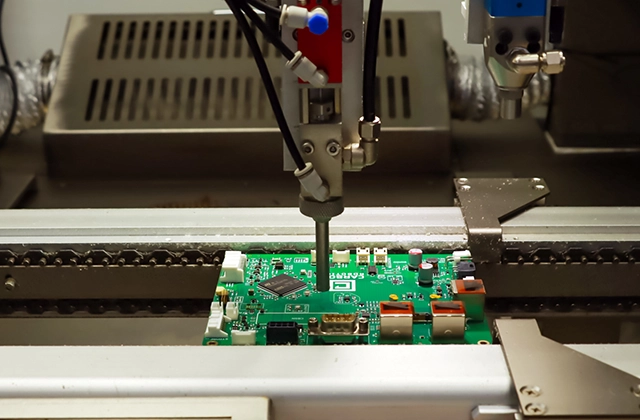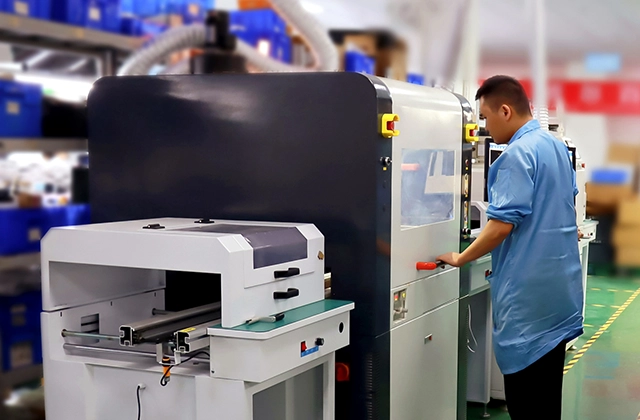In-depth Analysis and Practical Guide to PCBA Conformal Coating

In today's electronics landscape, characterized by ever-increasing miniaturization, density, and performance, the reliability of Printed Circuit Board Assemblies (PCBAs) faces unprecedented challenges. The shrinking dimensions of components and reduced clearances make PCBAs highly susceptible to external environmental factors. Seemingly innocuous elements like humidity, dust, salt spray, and mold can become "silent killers," leading to circuit failure. Therefore, applying a protective "armor" – conformal coating – to PCBAs has become a critical step in enhancing the durability and reliability of electronic products.
I. Why PCB assembly Needs Conformal Coating: The Harsh Realities of Environmental Challenges
The threat posed by environmental factors to PCBAs cannot be overstated:
Humidity and Condensation: Water is a primary culprit in corrosion. Airborne moisture, especially in high-humidity environments (e.g., at 80% RH, a water film 5-20 molecules thick can form on surfaces), can penetrate material interstices or coating pinholes to reach underlying metals. When combined with ionic contaminants (such as salts or flux residues), it forms conductive electrolytes, leading to electrochemical migration, leakage currents, and even signal distortion under voltage. Condensation, which occurs when a device's surface temperature drops below the "dew point," poses an even more direct threat.
Dust Intrusion: Atmospheric dust, particularly fine particles smaller than 2.5 microns, can settle on PCB assembly surfaces. When these particles adsorb contaminants, they can readily initiate electrochemical corrosion, increasing failure rates. The detrimental effects of dust are exacerbated in hot, humid, and salt-laden environments.
Salt Spray Corrosion: In coastal regions or areas affected by industrial emissions, airborne salt spray is highly destructive to the plating on metal components and accelerates electrochemical corrosion, leading to broken traces and component failure. Even everyday hand perspiration (containing salts, urea, etc.) can cause similar corrosive effects.
Fungal Growth (Mold/Mildew): In warm, humid conditions, fungi can proliferate on PCBAs. They not only degrade organic materials, leading to a reduction in insulation properties, but their metabolic byproducts (organic acids) can also impair dielectric strength and potentially cause arcing.
To effectively isolate sensitive electronic components from these harsh environments, the conformal coating process is employed.

Elecrow Conformal Coating Service
II. Core Processes and Key Considerations for Conformal Coating
Conformal coating involves applying a thin, uniform layer of insulating protective material to the PCB surface. It significantly enhances a product's resistance to moisture, dust, salt spray (and even fungal growth) while also improving mechanical strength and insulation characteristics.
Precise Control of Coating Areas:
-
No-Coat Areas: Regions requiring electrical connectivity or specific functionality, such as gold fingers, connectors, test points, battery holders, heat sinks, and unsealed switches, must remain uncoated.
-
-
Must-Coat Areas: All solder joints, component leads, and conductive traces require thorough protection.
-
-
Standardization of Coating Thickness: According to standards like IPC-A-610E, different types of coating materials (e.g., acrylic, polyurethane, silicone) have recommended dry film thickness ranges (typically from tens to over a hundred microns). Thickness should be measured on a flat, cured surface or on a coupon processed alongside the assembly, using a micrometer or dry film thickness gauge. Wet film thickness can also be used to calculate dry film thickness.
-
Edge Definition and Uniformity: The ideal coating should have well-defined, clean edges with minimal "creep" or "wicking" (good edge definition). The overall coating must be uniform, smooth, and free from defects such as cracks, delamination, or bubbles, ensuring the integrity and consistency of the protective film.
Pre-Coating Preparations:
-
Cleaning: PCBAs should be cleaned as soon as possible after soldering to remove flux residues, oils, and other contaminants, ensuring good adhesion of the coating.
-
Masking: Areas designated as "no-coat" must be precisely masked, often using anti-static tapes or other suitable materials.
-
-
Pre-baking/Dehumidification: Pre-baking the PCB assembly before coating removes moisture, preventing bubbles under the coating or compromising adhesion.
-
III. Conformal Coating Application Methods: From Manual to Automated
Manual Brushing: A flexible method suitable for small batches, complex assemblies, or products with stringent masking requirements. Material waste is minimal. However, it is highly operator-dependent and achieving consistent results can be challenging.
Manual Dipping: Can achieve a very uniform coating but is not suitable for PCBAs with adjustable capacitors, potentiometers, or other components that could be adversely affected. Viscosity and withdrawal speed are critical parameters.
Spraying: The most widely used application method.
- Manual Spraying: Suitable for complex workpieces or low-volume, high-mix production. Care must be taken to manage overspray and ensure reliable masking.
- Automated Spraying (Selective Coating): Performed using automated equipment, this method is ideal for high-volume production, offering excellent consistency, precision, and reduced environmental impact. It is the prevailing trend in modern PCB assembly manufacturing.

Elecrow Operator doing Conformal Coating
IV. Professional PCBA Services: Ensuring Quality and Reliability in Conformal Coating
Understanding the theory and processes of conformal coating is crucial, but translating this knowledge into a reliable protective layer on a PCB assembly demands professional manufacturing and assembly capabilities. This is where specialized PCBA service providers like Elecrow excel.
Conformal coating is a vital step in the PCB assembly process, and Elecrow's PCB Assembly services ensure this critical process is executed to the highest quality standards:
-
Rigorous Pre-treatment: Elecrow ensures that PCB assembly surfaces are thoroughly cleaned and fully dried before coating, establishing a solid foundation for robust coating adhesion. Their experienced technicians can accurately mask areas requiring precision protection.
-
Flexible Coating Solutions: Whether a client specifies manual brushing, cost-effective dipping, or the selective automated spraying common in high-volume production, Elecrow can provide the appropriate coating solution tailored to the product's specific needs, volume, and complexity, while strictly controlling coating thickness, uniformity, and edge definition.
-
Quality Inspection and Control: After coating, Elecrow conducts stringent quality checks, such as inspecting coating coverage and uniformity under UV light, to ensure there are no missed spots, bubbles, orange peel, or other defects, and that the coating complies with IPC standards.
Furthermore, Elecrow offers a comprehensive service chain, which is paramount for the reliability of the final product:
PCB Design Support and DFM (Design for Manufacturability) Review: Early in the design phase, Elecrow can assist in optimizing the design to facilitate subsequent assembly and conformal coating processes.
High-Quality Bare PCB Fabrication: A superior substrate is fundamental for good coating results.
Reliable Component Sourcing: Ensuring the quality of all components prevents issues related to component defects from affecting the conformal coating's effectiveness or overall product reliability.
Precision SMT and THT Assembly: High-quality soldering prevents defects like cold joints or solder bridges, providing a "clean" substrate for subsequent coating.
Comprehensive Testing Services: Including AOI (Automated Optical Inspection), X-Ray Inspection, ICT (In-Circuit Test), and FCT (Functional Test), these services verify PCB assembly quality both before and after coating.
Partnering with a provider like Elecrow, capable of offering a full-spectrum service from PCB design and fabrication, component sourcing, and PCB assembly (including professional conformal coating) to final testing, allows you to focus your resources on product development and market strategy, while entrusting the complex manufacturing stages to experts. Their professional process control and quality management systems ensure your PCBAs receive optimal environmental protection, significantly enhancing overall product reliability and lifespan.
More services are available
The conformal coating process is a key technology for ensuring the reliability of modern electronic products. A thorough understanding of its principles, mastery of its process parameters, and collaboration with a partner like Elecrow—equipped with a complete service chain and professional execution capabilities—are essential to truly fortify your precision circuits against the challenges of diverse operating environments.
